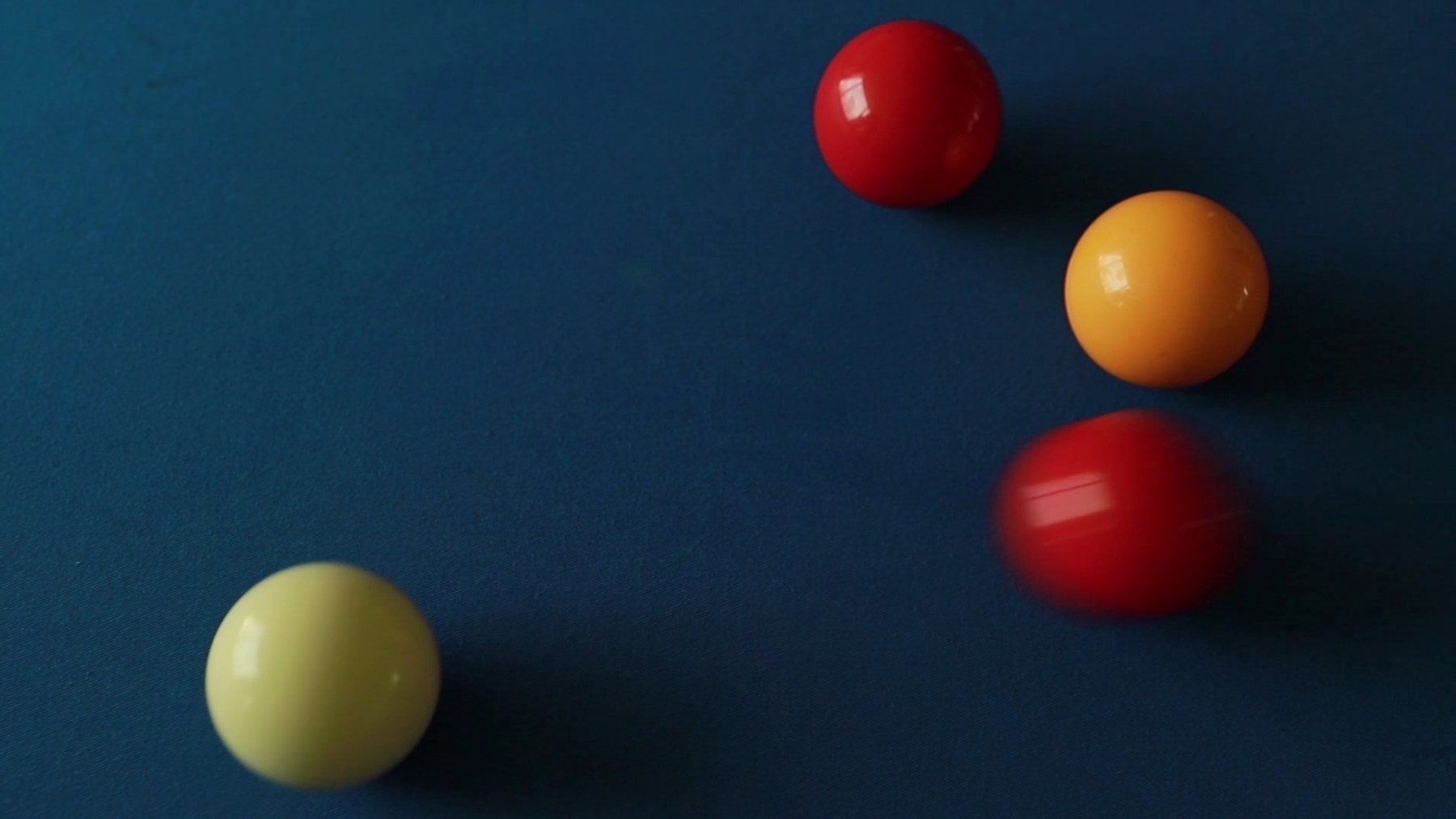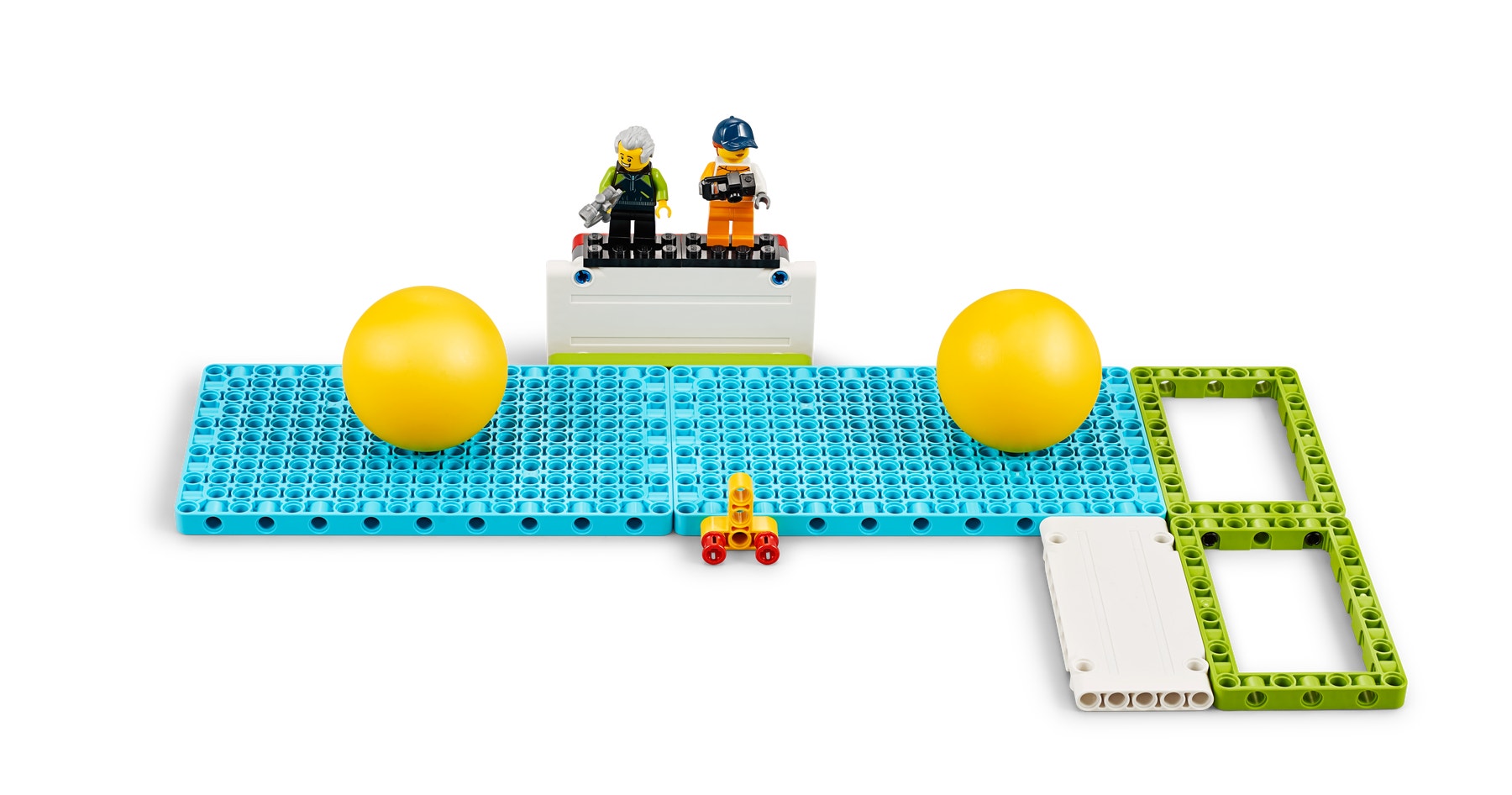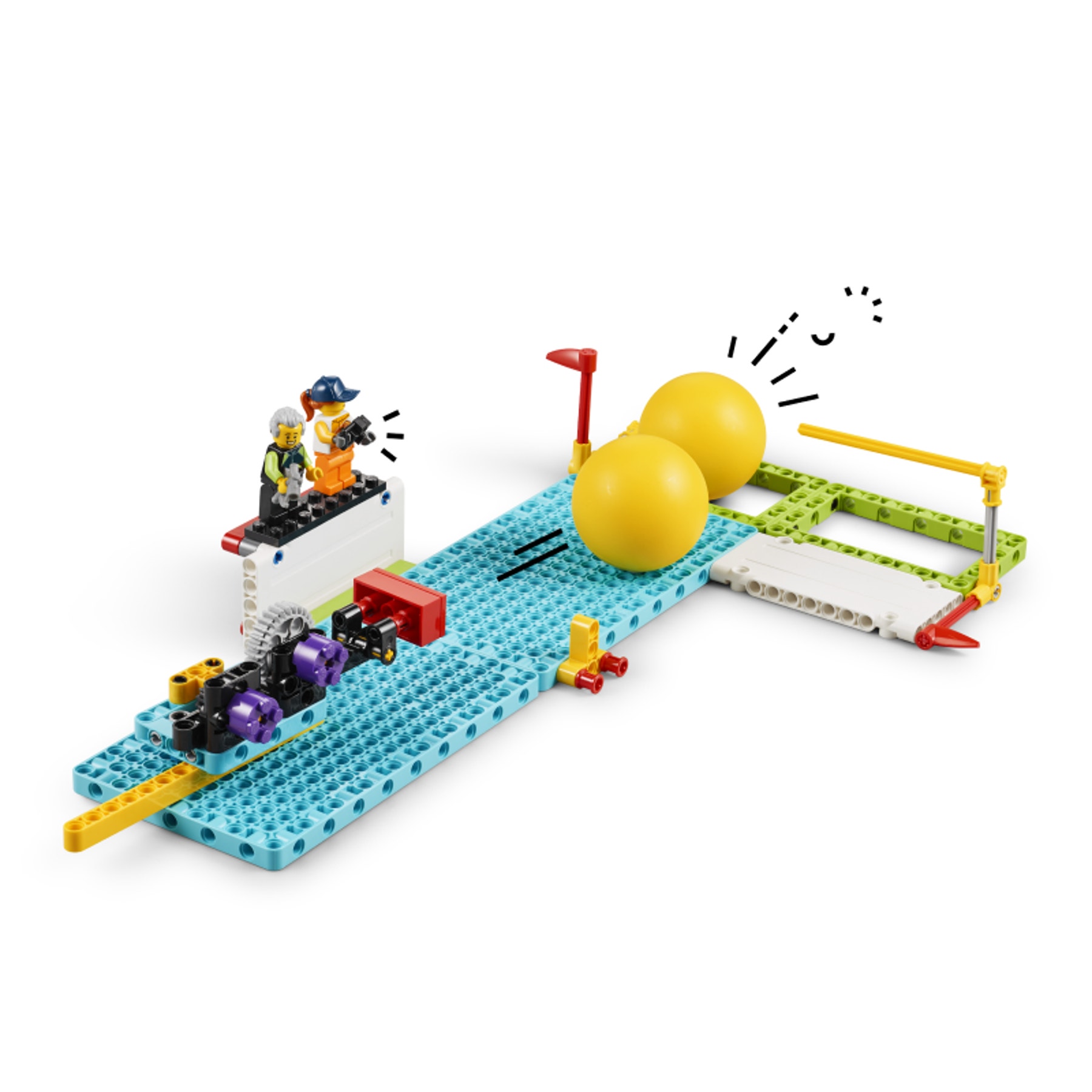Strike the Ball
One way to become better at sports is to understand the science behind them. It is time to apply your understanding of forces and interactions to build a tabletop ball-striking game.

Prepare
- Review the online pupil material. Use a projector to share this material with your pupils during the lesson. This lesson is designed to be facilitated over at least two 45-minute class sessions. Part A comprises session 1, and Part B comprises session 2.
- Make sure that you have covered Newton’s three laws of motion in an earlier lesson.
- Consider the abilities and backgrounds of all your pupils. Differentiate the lesson to make it accessible to everyone. See the Differentiation section below for suggestions.
Part A (45 Minutes)
Engage
((Whole Class, 5 Minutes))
- Watch the pupil video here or access it via the online pupil material.

- Facilitate a quick discussion about which forces help one ball to collide with another in tabletop ball games, how the resulting force vectors can impact movement and how players can use their understanding of forces, interactions and angles to score.
- Ask questions like these:
- How are the ball games that you saw in the video different from others that you have seen? (One ball collides with another to hit it into a pocket to score.)
- What happens when 2 balls collide at different angles, and why does this happen? (Newton’s third law: equal and opposite forces)
- What did you notice about the collisions that you saw in the video? (When the balls bump each other, it is called an ‘elastic collision’. The rigid balls bounce off each other with no [significant] loss of kinetic energy/motion.)
- Tell the pupils that they are going to design a mechanism that can strike one ball against another to pot it from different angles.
Explore
((Small Groups, 30 Minutes))
- Have the pupils work in pairs to build this game area.

- Explain the challenge:
- Tell the pupils that they must design a ball-striking mechanism for the game area that can score into either pocket.
- Explain the scoring criteria:
- Pocket 1 (2 points)
- Pocket 2 (4 points)
- One ball in both by striking ball ‘A’ against ball ‘B’ (6 points)
- No points are scored if either ball does not stay in the pocket (green frame).
- They are not allowed to touch either ball with their hands after they have placed it on the game area.
- The ball-striking mechanism must be attached to the blue panel (they can’t just use a long cross axle as a mini pool cue), and it should have at least 2 moving parts.
- Have the pupils discuss the problems that must be solved and then sketch and label some ideas before they start building.
- They can sketch their ideas with a pencil and paper, or they can ‘sketch’ in 3-D using the bricks.
Explain
((Whole Class, 5 Minutes))
- Gather your pupils together to review and discuss their ideas.
- Ask questions like these:
- How will your model push the ball?
- Which models from the building instructions book inspired you?
- What is the same as your sketch? What is different?
- What could you change?
- The pupils can keep their assembled models in the boxes to reuse during the next lesson. If the sets will be used by another class in between, take a photo of every model, then have the pupils disassemble their models. When they rebuild and improve during the next lesson, their models will be even better!
Part B (45 Minutes)
Engage
((Whole Class, 5 Minutes))
- Hand out your pupils' sketches, photos and/or models from Part A of the lesson.
- Have the pupils share what they are planning to do today to refine, improve and finish their models.
- If any of your pupils are having difficulty, encourage them to ask another team for advice. In the real world, it is OK for engineers and designers to build on the ideas of others! They could also use the building instructions for inspiration.
- Remind the pupils that they must only use the bricks from their sets, they cannot borrow elements from other teams.
Explore
((Small Groups, 30 Minutes))
- Ask each group to begin building and testing a prototype mechanism that can strike the ball.
You can find building help in the Tips section below.
Explain
((Whole Class, 5 Minutes))
- Have the pupils share and explain their models.
- Ask questions like these:
- How well did your model work?
- How where you able to score at an angle?
Elaborate
((Whole Class, 5 Minutes))
- Ask the pupils to share which of their classmates' models inspired them the most.
- Allow time for the pupils to disassemble their models, sort the bricks back into the trays and tidy up their workstations.
Evaluate
(Ongoing Throughout The Lesson)
- Give feedback on each pupil's performance.
- Facilitate self-assessment.
- To simplify the process, you can use the assessment rubrics that have been provided.
Observation Checklist
- Measure your pupils’ proficiency in describing how the forces acting in a specific direction on an object can change the object’s motion.
- Establish a scale that suits your needs. For example:
- Requires additional support
- Can work independently
- Can teach others
Self-Assessment
- Have each pupil choose the brick that they feel best represents their performance.
- Green: With some help, I can describe how force and mass can change an object's motion.
- Blue: I can describe how force and mass can change an object's motion.
- Purple: I can describe and explain how force and mass can change an object's motion.
Peer Feedback
- Encourage your pupils to assess their peers by:
- Using the brick scale above to score each other's performance
- Presenting their ideas and giving constructive feedback

Tips
MODEL TIPS
- If any of your pupils are having difficulty generating ideas, coach them by:
- Asking if they have already built any models that could make a ball move
- Showing them the inspiration picture on page 1 of building instructions book to use as a good starting point
- Some pupils might have ideas that are too big to build within the available time. Encourage them to think of ways they could simplify their idea before the next class. Foster their creativity, explaining that many designers take time away from a project to rethink and revise their plans.
- This photo shows a sample solution taken from page 1 in the building instructions book. However, we do not recommend sharing it with your pupils unless they are having trouble coming up with their own ideas because it tends to limit their creativity.

Differentiation
Simplify this lesson by:
- Having your pupils start by exploring the rack and pinion mechanism on page 1 in the building instructions book
Increase the difficulty by:
- Challenging the pupils to design something that will automatically show when a pocket has been scored
- Having the pupils decorate their models using other elements from the set
Erweiterungen
(Note: This will require additional time.)
To incorporate the development of maths skills, ask your pupils to use the printed angle measurement elements from their sets to measure the angles from which the balls are being hit. Tell them to record each angle and whether they scored. Then have them analyse this data to determine which angle worked best.
Year 6 Statistics and Probability
ACMSP144
Describe probabilities using fractions, decimals and percentages
ACMSP145
Conduct chance experiments with both small and large numbers of trials using appropriate digital technologies
ACMSP146
Compare observed frequencies across experiments with expected frequencies
ACMSP147
Interpret and compare a range of data displays, including side-by-side column graphs for two categorical variables
ACMSP148
Interpret secondary data presented in digital media and elsewhere
SP. B.5.
Teacher Support
The pupils will:
- Apply what they have already learned about forces and interaction
- Brainstorm, sketch, design, prototype, build, test, iterate, rebuild and experiment to engineer a mechanical solution that will make them win a game
- LEGO® Education BricQ Motion Prime Sets (one for every two pupils)
ACSSU155
Energy appears in different forms, including movement (kinetic energy), heat and potential energy, and energy transformations and transfers cause change within systems
ACSIS146
Reflect on scientific investigations including evaluating the quality of the data collected, and identifying improvements
ACMSP146
Compare observed frequencies across experiments with expected frequencies




